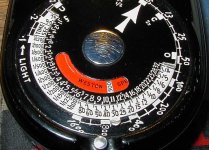Trawlerman
Member
I have a 1939 Leica III w/ Summar 50/f2.0 and have a question.
The shutter speeds and the apperture settings differ from the modern standards. I don't have a problem with the shutter speeds as they are not that different from modern standards but i'm having a little trouble in getting my head around the apaerture settings.
My Summar has the following aperture settings - 2, 2.2, 3.2, 4.5, 6.3, 9 and 12.5
How do these relate to the modern standards? I guess f2 is the same as that is wide open but what about the rest? Is 12.5 the new f11 f16 or f22?
I'm a bit puzzled by these? I was hoping to use the Sunny-16 rule with this camera but as there is no 16 what do I do?
Many thanks......
The shutter speeds and the apperture settings differ from the modern standards. I don't have a problem with the shutter speeds as they are not that different from modern standards but i'm having a little trouble in getting my head around the apaerture settings.
My Summar has the following aperture settings - 2, 2.2, 3.2, 4.5, 6.3, 9 and 12.5
How do these relate to the modern standards? I guess f2 is the same as that is wide open but what about the rest? Is 12.5 the new f11 f16 or f22?
I'm a bit puzzled by these? I was hoping to use the Sunny-16 rule with this camera but as there is no 16 what do I do?
Many thanks......



